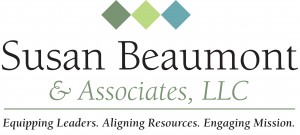The large church never met a program that it didn’t like. The leadership default position in the large congregation is to add programming every time someone wants to enhance impact or pursue excellence. Every new strategic planning process results in the layering on of new programs without winnowing out the old. The hint that any small group of individuals in a congregation is still attached to a program is enough to warrant keeping a program around for years, even after the program has outlived its usefulness. Meanwhile, our staff teams are becoming increasingly exhausted as they struggle to keep pace; attending a vast array of choices that are no longer meaningful to the mission of the congregation. It’s time to stop the madness!
A particularly effective tool for evaluating programs is the Program Logic Model. You can use this model to evaluate a standalone program, an entire ministry area, or to engage a more comprehensive evaluation of all the programs in your congregation. Here’s how it works. The model invites you to describe the logical linkages among the situation a program is meant to address, the inputs required, the outputs generated and the outcomes sustained. When you invite leaders to define each component you surface unstated assumptions about the program and its intentions. This allows leadership to more objectively define critical performance measures and to evaluate whether the outcomes of a program justify the investment of time, resources and energy required. The creation of a logic model can facilitate meaningful dialogue among your leaders about what you are seeking to accomplish, and how effectively you are achieving those outcomes. Here’s the model.
| Situation: What is the condition to which this program is a response? How is this program/ministry an appropriate response to the condition? |
Inputs: What we Invest
|
Outputs:What We Do & Who We Reach
|
Outcomes: (Short, Medium and Long-Term)Changes We Observe In:
|
It works well to engage the model with a group of leaders who are relevant to the ministry. Invite the gathered group to define the situation, the inputs, the outputs and the outcomes. Then set them loose evaluating how effectively this program is serving the situation it was originally defined to address? How well does the program serve the congregation’s mission (however we currently understand that mission)?
If you’d like to learn more about how to apply the logic model in a congregational context, I’d recommend “Holy Clarity: The Practice of Planning and Evaluation” by Sara Drummond.



